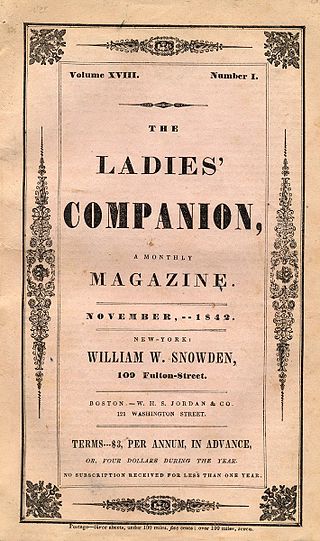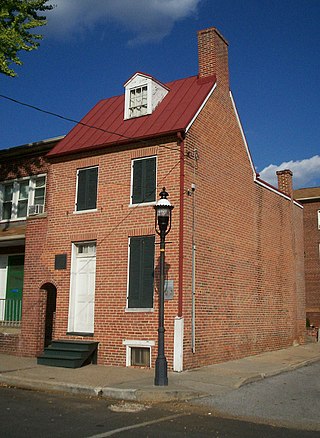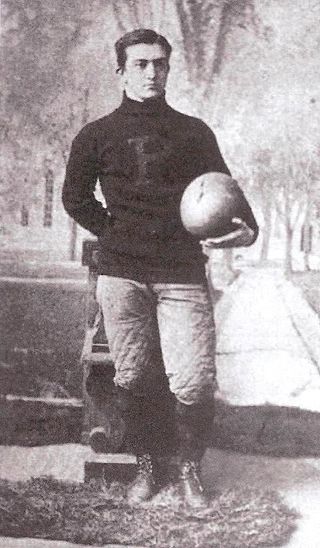
Edgar Allan Poe was an American writer, poet, author, editor, and literary critic who is best known for his poetry and short stories, particularly his tales of mystery and the macabre. He is widely regarded as a central figure of Romanticism and Gothic fiction in the United States, and of American literature. Poe was one of the country's earliest practitioners of the short story, and is considered the inventor of the detective fiction genre, as well as a significant contributor to the emerging genre of science fiction. He is the first well-known American writer to earn a living through writing alone, resulting in a financially difficult life and career.

"The Black Cat" is a short story by American writer Edgar Allan Poe. It was first published in the August 19, 1843, edition of The Saturday Evening Post. In the story, an unnamed narrator has a strong affection for pets until he perversely turns to abusing them. His favorite, a pet black cat, bites him one night and the narrator punishes it by cutting its eye out and then hanging it from a tree. The home burns down but one remaining wall shows a burned outline of a cat hanging from a noose. He soon finds another black cat, similar to the first except for a white mark on its chest, but he develops a hatred for it as well. He attempts to kill the cat with an axe but his wife stops him; instead, the narrator murders his wife. He conceals the body behind a brick wall in his basement. The police soon come and, after the narrator's tapping on the wall is met with a shrieking sound, they find not only the wife's corpse but also the black cat that had been accidentally walled in with the body and alerted them with its cry.

"The Murders in the Rue Morgue" is a short story by Edgar Allan Poe published in Graham's Magazine in 1841. It has been described as the first modern detective story; Poe referred to it as one of his "tales of ratiocination".
Poe is the mascot of the Baltimore Ravens of the National Football League (NFL). He is named after the writer and Baltimore, Maryland resident, Edgar Allan Poe.

Westminster Hall and Burying Ground is a graveyard and former church located at 519 West Fayette Street in Baltimore, Maryland, United States. It is currently part of the grounds of the University of Maryland's School of Law. It occupies the southeast corner of West Fayette and North Greene Street on the west side of downtown Baltimore. It sits across from the Baltimore VA hospital and is the burial site of Edgar Allan Poe (1809–1849). The complex was declared a national historic district in 1974.

"The Mystery of Marie Rogêt", often subtitled A Sequel to "The Murders in the Rue Morgue", is a short story by American writer Edgar Allan Poe written in 1842. This is the first murder mystery based on the details of a real crime. It first appeared in Snowden's Ladies' Companion in three installments, November and December 1842 and February 1843. Poe referred to it as one of his "tales of ratiocination".

The Poe Museum or the Edgar Allan Poe Museum, is a museum located in the Shockoe Bottom neighborhood of Richmond, Virginia, United States, dedicated to American writer Edgar Allan Poe. Though Poe never lived in the building, it serves to commemorate his time living in Richmond. The museum holds one of the world's largest collections of original manuscripts, letters, first editions, memorabilia and personal belongings. The museum also provides an overview of early 19th century Richmond, where Poe lived and worked. The museum features the life and career of Poe by documenting his accomplishments with pictures, relics, and verse, and focusing on his many years in Richmond.
A toaster is a device to cook bread.

Sarah Helen Power Whitman was an American poet, essayist, transcendentalist, spiritualist and a romantic interest of Edgar Allan Poe.

The city of Baltimore, Maryland, has been a predominantly working-class town through much of its history with several surrounding affluent suburbs and, being found in a Mid-Atlantic state but south of the Mason-Dixon line, can lay claim to a blend of Northern and Southern American traditions.

The Edgar Allan Poe House and Museum, located at 203 North Amity St. in Baltimore, Maryland, is the former home of American writer Edgar Allan Poe in the 1830s. The small unassuming structure, which was opened as a writer's house museum in 1949, is a typical row home. It was designated a National Historic Landmark in 1972.

The death of Edgar Allan Poe on October 7, 1849, has remained mysterious in regard to both the cause of death and the circumstances leading to it. American author Edgar Allan Poe was found delirious and disheveled at a tavern in Baltimore, Maryland, on October 3. He sought the help of magazine editor Joseph E. Snodgrass and was taken to the Washington College Hospital, where he was treated for apparent intoxication. Poe had no visitors in the hospital and gave no account of how he came to be in his condition before dying on October 7 at age 40.

Edgar Allan Poe has appeared in popular culture as a character in books, comics, film, and other media. Besides his works, the legend of Poe himself has fascinated people for generations. His appearances in popular culture often envision him as a sort of "mad genius" or "tormented artist", exploiting his personal struggles. Many depictions of Poe interweave elements of his life with his works, in part due to Poe's frequent use of first-person narrators, suggesting an erroneous assumption that Poe and his characters are identical.

Nathan Covington Brooks was an American educator, historian, and poet. Born in West Nottingham, Cecil County, Maryland, Brooks grew up to become the first principal of Baltimore City College, the third oldest public high school in the United States, and the only president of the Baltimore Female College, the first institution of higher education for women in Maryland. He also was the owner of the literary magazine The American Museum in which he published several works of the famed poet Edgar Allan Poe, and the author of several textbooks on classical literature. Brooks died in Philadelphia, Pennsylvania.

Edgar Allan Poe was Attorney General of the State of Maryland from 1911 to 1915. He was born in Baltimore, the son of former Maryland Attorney General John Prentiss Poe. He was named for his great uncle and second cousin, twice removed, the celebrated author Edgar Allan Poe, who died in 1849.

Poe is a crater on Mercury. It has diameter about 77 km and is situated in northern part of Caloris Planitia. It is centered on 43.76°N 159.1°E

The Raven is a 2012 American crime thriller film directed by James McTeigue, produced by Marc D. Evans, Trevor Macy and Aaron Ryder and written by Ben Livingston and Hannah Shakespeare. Set in 1849, it is a fictionalized account detailing the last days of Edgar Allan Poe's life, in which the poet and author helps the police pursue a serial killer, whose murders mirror those in his stories. While the plot of the film is fictional, the writers based it on some accounts of real situations surrounding Edgar Allan Poe's mysterious death. Poe is said to have repeatedly called out the name "Reynolds" on the night before his death, though it is unclear to whom he was referring. The film stars John Cusack, Alice Eve, Brendan Gleeson and Luke Evans. Its title derives from Poe's 1845 poem "The Raven", in a similar manner to the earlier unrelated 1935 and 1963 films.
David Poe Jr. was an American actor and the father of Edgar Allan Poe.
Eugene LeMoine Didier was an American writer and a recognized authority on Edgar Allan Poe.

Rosalie Mackenzie Poe was an American poet and the sister of Edgar Allan Poe.

















